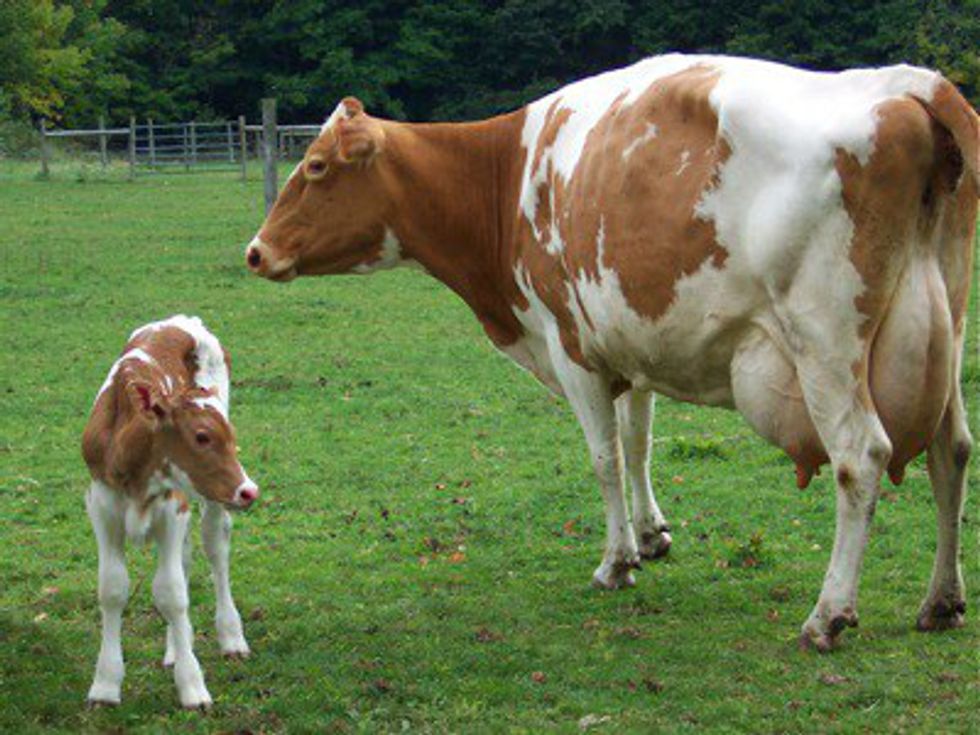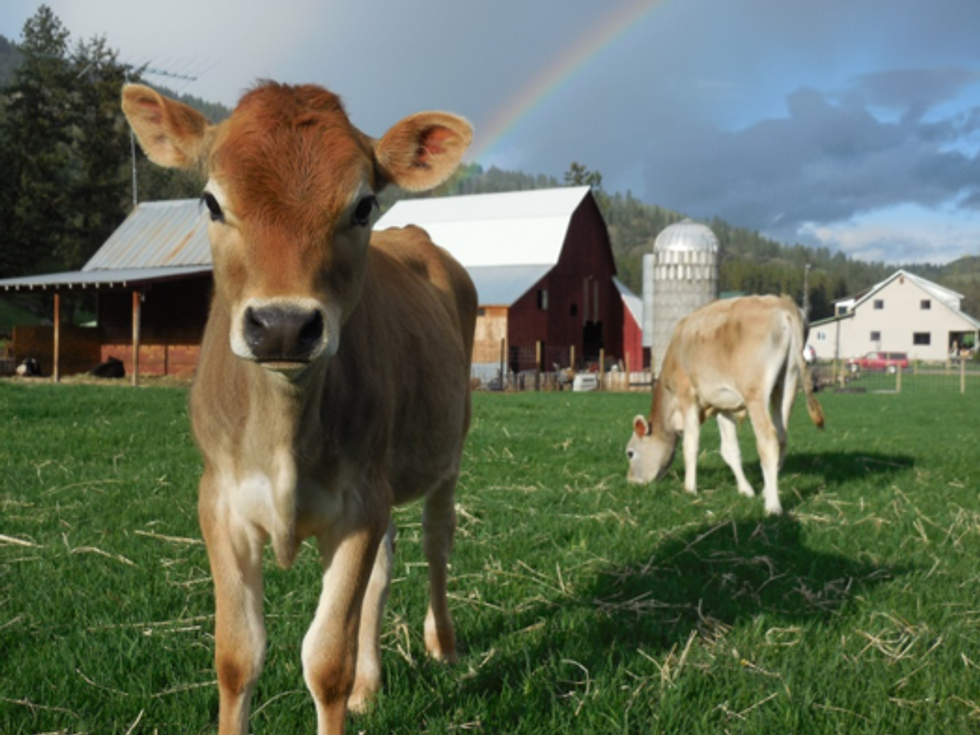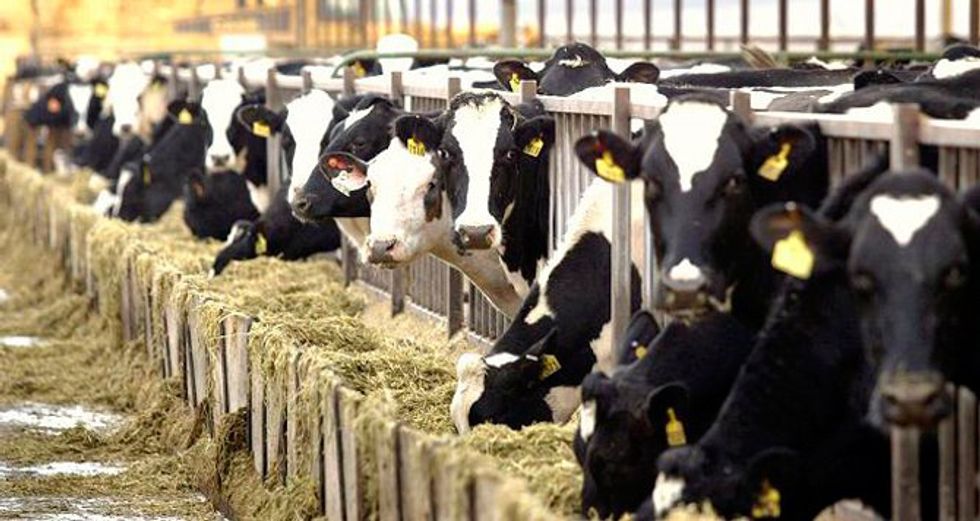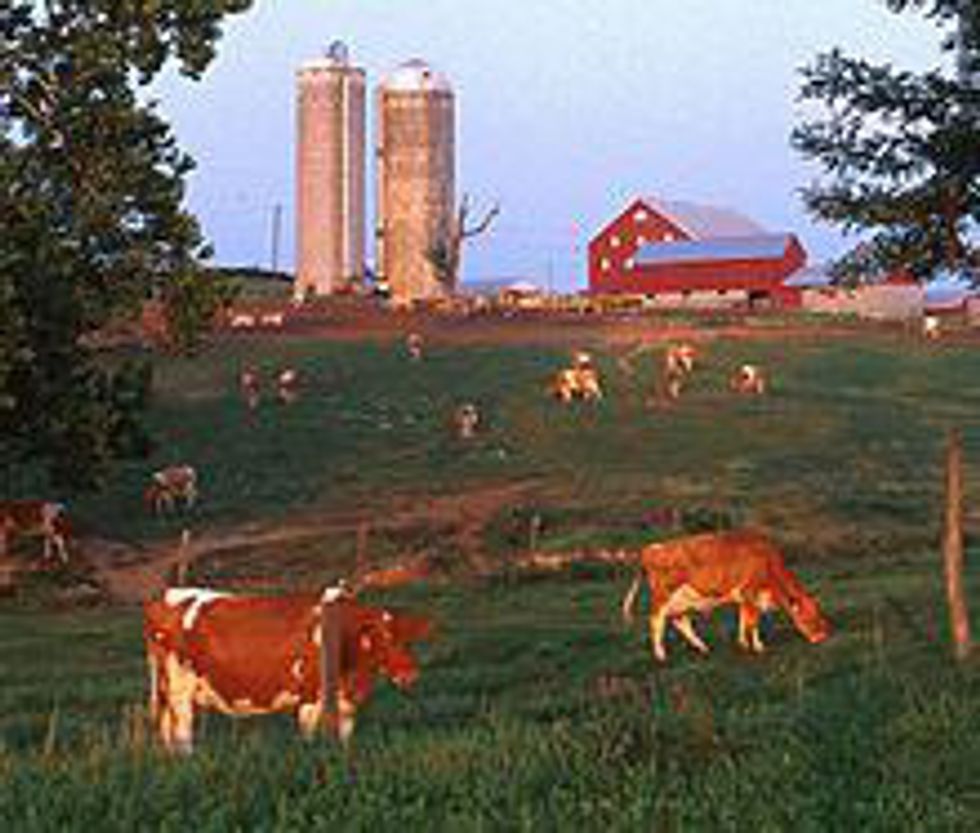This year, I have started working on my college's dairy farm. I have experienced milking practices first-hand and I have seen the proper steps and precautions that are taken to ensure the safety of the dairy cows and the milk that is produced.
After reading an article about "Why You Should Stop Drinking Milk", I have decided to write an article about why you should continue drinking milk. The article that I read had been shared by a lot of my Facebook friends and it contained very few, if any facts about the dairy industry. Many people avoid dairy products and miss out on its health and nutritional benefits.
Below are a few of the common myths about the dairy industry.
You're drinking pus
False. Milk has very high standards it must meet, in order to be used in the industry. Milk that does not meet these standards is not shipped to the processor and the farmer must correct his procedures in order to resume shipping milk. The myth of pus in milk arises from the equating of somatic cells with pus. This couldn’t be further from the truth. Pus is made up of dead white blood cells, dead skin cells, and bacteria. Somatic cells are living white blood cells located in the udder of cows. Like all white blood cells, they fight infection. An elevated somatic cell count indicates that the cow is fighting some sort of infection.
Milk is tested both on farm and at the processing plant. A cow with a somatic cell count of 200,000 cells per mL is considered to be in optimum health, she is not fighting any sort of infection. The maximum allowable limit for somatic cells in milk is 400,000.This line is drawn to ensure that sick cows are treated and that their milk does not enter the food chain. Dairy farmers are committed to animal welfare. In fact, cow comfort is actually very important to milk quality.
The health benefits are misleading... Soy, almond, coconut and rice beverages are healthier than real dairy milk.
False. According to the Southeast United Dairy Industry Association, milk alternatives are a good source of protein, but they are fortified and do not offer the same package of healthy nutrients-- calcium, potassium, phosphorus, protein, vitamins A, D and B12, riboflavin and niacin—found in milk and milk products.
It’s a nightmare for the cows
The DFA is continuously working to improve industry standards and the best practices, in order to ensure the nation's dairy herd is being well taken care of. The dairy industry has a history of dedication to the proper care and wellness of animals. In fact, cow comfort is actually very important to milk quality.
Dairy cows are given unnecessary antibiotics, transferring antibiotics to the milk we drink.
False. Milk is thoroughly tested, to assure that antibiotics do not enter the milk supply. If cows are prescribed antibiotics by a veterinarian, they are separated from the herd to be milked, and the milk is discarded. That milk never reaches the consumer and is not included in any milk products. Milk and dairy products are some of the most strictly regulated foods in the country.
Cows on modern farms are treated like nothing more than milk-producing “machines.”
False. Farmers provide their cows a nutritious diet, good medical care, and healthy living conditions. It is vital that dairy cows are healthy, in order to produce nutritious milk. Dairy cattle receive regular check-ups, vaccinations, and receive quick treatment of illnesses.

"Dairy cows are abused."
Abuse to dairy cows and any other animal is never okay. Dairy farmers are committed to animal welfare. Comfortable, healthy, well-taken care of cows produce the best quality milk. No farmer wants to jeopardize their income or the bottom line and there is no reason or motive for a farmer to abuse their cattle.
Unfortunately, these are just a few common myths of the dairy industry and this article would be very long if I discussed every myth that exists. I have nothing against those who choose not to consume dairy products. I'm simply just trying to do my part to slow the spreading of lies about the ways cows are treated on dairy farms and the misrepresentation of common dairy practices.






























